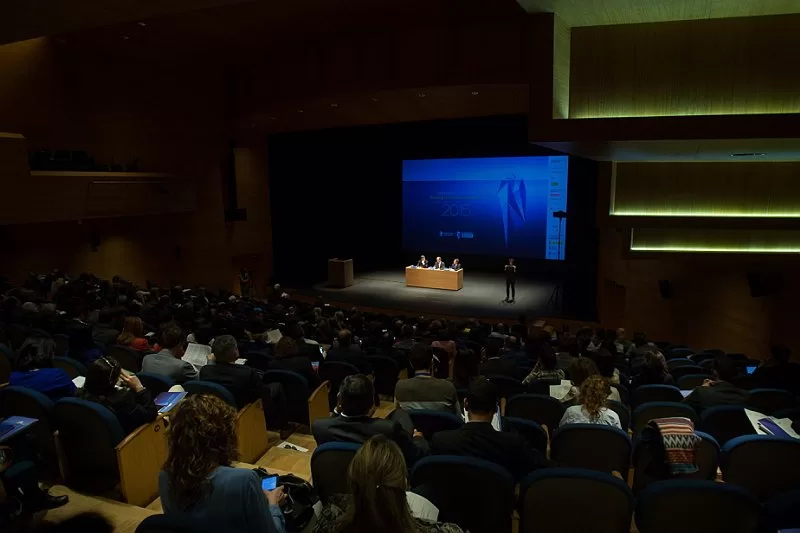
This sums up the motivation behind the new Building Universities’ Reputation conference, launched last week at Spain’s Universidad de Navarra. A global forum for universities and related bodies – including rankings organisations – the conference will be held every two years, with plans for related research projects in the interim. Some 300 delegates and 48 speakers gathered for the three-day event, representing 18 different countries and more than 90 organisations.
Rankings as a key marker of reputation
The current spotlight on reputation can be largely understood in terms of the conditions behind global rankings’ rise to prominence; notably, growth in student and academic mobility, shortfalls in public funding, and the resulting surge in competition for enrolments, funding and partnerships. As well as sharing many of the same underlying conditions, rankings constitute one of the key markers of reputation – effectively the tip of a reputation “iceberg” (the forum’s aptly chosen visual emblem).
This was certainly one of the key themes of the forum, with all discussions making frequent reference to the role and impact of rankings. Other recurrent strains were the importance of consistency in organisational culture and communications; the challenge of achieving differentiation in an increasingly homogenous sector; and the potential for collaboration, rather than simply competition, in the quest for reputation growth.
The importance of consistency
Juan Manuel Mora, vice president of communications at the University of Navarra and one of the conference’s initiators, was among several speakers to expand on the iceberg visualization. In his schema, the tip represents an institution’s image, reputation and – in the most successful instances – authority. But beneath the metaphorical water is where most of the real work goes on. Public reputation, Mora argued, is the visible output of an organisation’s success in constructing a clear and consistent internal identity and culture, alongside fruitful dialogues and relationships with key stakeholders.
This emphasis on the importance of consistency across all organisational behaviours and communications was reiterated by the majority of speakers, with widespread recognition that external image has to reflect an underlying reality. In short, a clever marketing campaign, flashy website or even a high ranking position may all contribute to shaping reputation – but all of this could be undermined if other sources (such as personal interactions with staff members or graduates of the institution) send a different signal.
This certainly rings true in light of my own experience of running a series of focus groups with European students last month, part of a QS project initiated by Dasha Karzunina. Among the key trends to emerge from these conversations, prospective students emphasized the importance of building up a consistent image of a university from multiple sources – rankings, websites, peer reviews. While a consistent message would strengthen an institution’s standing in their eyes, conflicting perspectives present a strong deterrent.
The challenge of distinctiveness
In the opening plenary, Professor John Haldane, director of the Centre for Ethics, Philosophy and Public Affairs at the University of St Andrews, proposed that universities should return to focus on what he believes to be their core mission: teaching academic disciplines at undergraduate level. Drawing on the historic support of J. S. Mill and John Henry Newman, Haldane contended that other equally worthy aims, including research and vocational training, should be kept distinct from this central enterprise.
While most attendees did not share Haldane’s view, many argued more generally for the importance of each institution identifying a clear – and distinctive – set of values. Presenting the recommendations of the 2012 report Distinctiveness in Higher Education, Anna Myers noted that one of the biggest challenges for universities is being brave enough to choose a narrower set of qualities to focus on – resisting the temptation to try and be ‘all things to all people’.
Again, this aligns with feedback from prospective students during our focus groups. Many complained that university websites, prospectuses and marketing messages often appear almost identical – leaving them frustrated in their attempt to differentiate options and identify their own best-match.
And it’s not just prospective students who are struggling to determine universities’ distinct identities. Presenting the World 100 Reputation Network’s report How PhD Students Choose Top Universities, director Louise Simpson pointed out that most students struggle to talk about their own institution’s identity. This, as several others noted, is a big missed opportunity for most HEIs; students, graduates and staff members have huge potential to become influential brand ambassadors.
The potential for collaboration
Appropriately given the context of the event, a third recurrent theme concerned the potential for collaboration – and not just competition – in the field of reputation. The British Council’s Liz Dempsey highlighted the multiple benefits of university research partnerships, suggesting that “co-authorship is co-branding at the highest level”. Mark Sudbury, director of communications at UCL, spoke of the benefits of sharing best practices through membership organisations such as the World 100 (which he chairs), the Russell Group and LERU.
And could even rankings – perhaps the most obvious sign/stimulant of competition – have a role to play in supporting international collaboration? In fact, this question will provide the theme for next year’s IREG conference, which will debate rankings as “bridging tool” versus “hindrance”. Thoughts?



